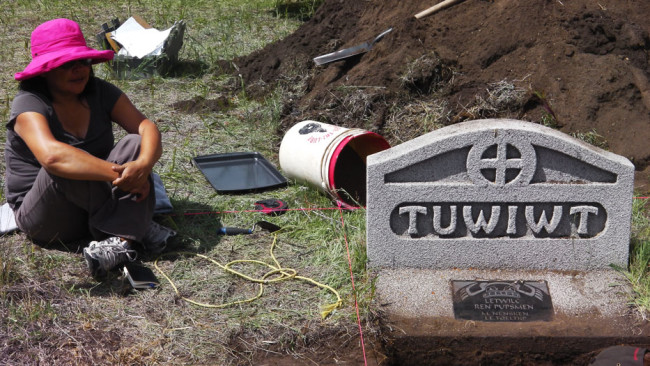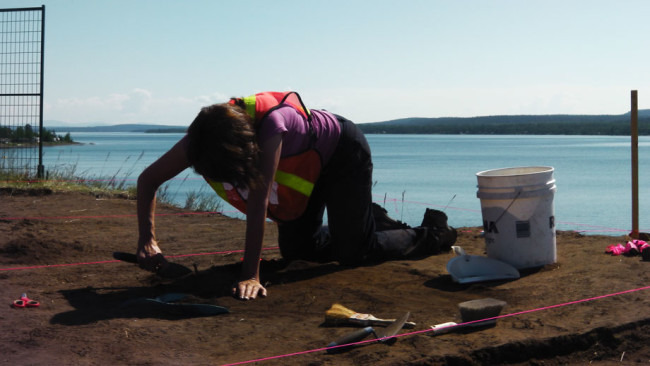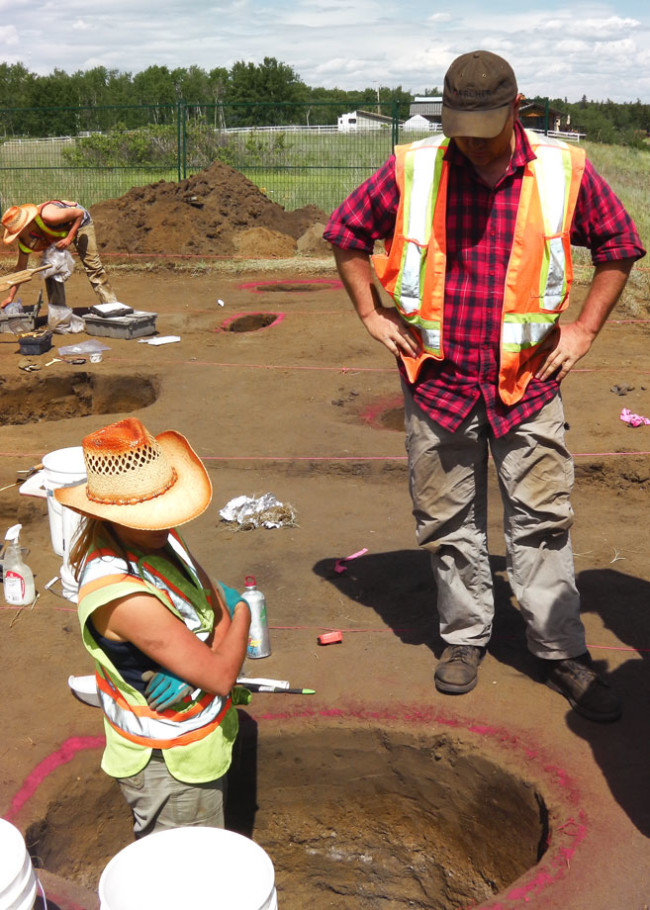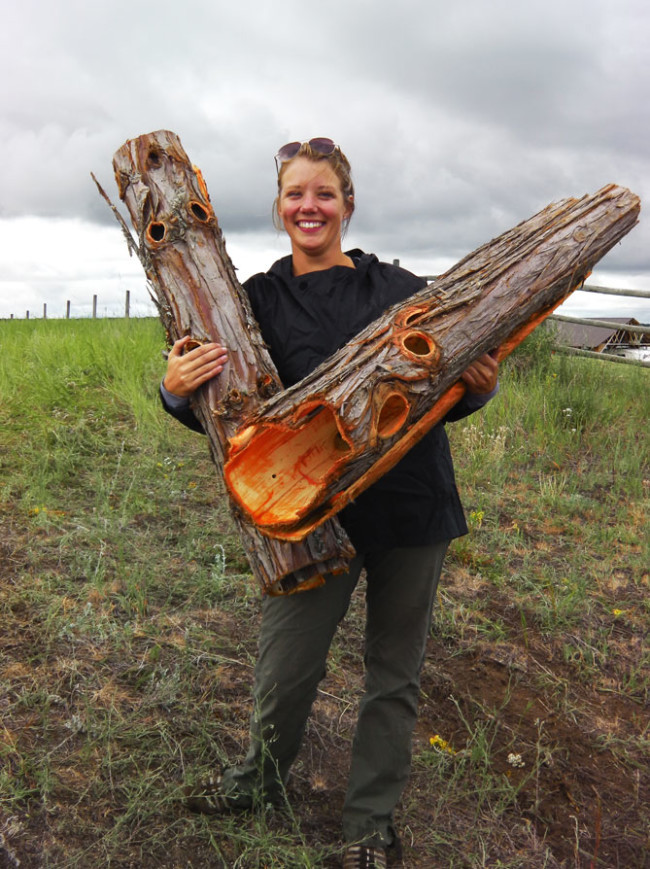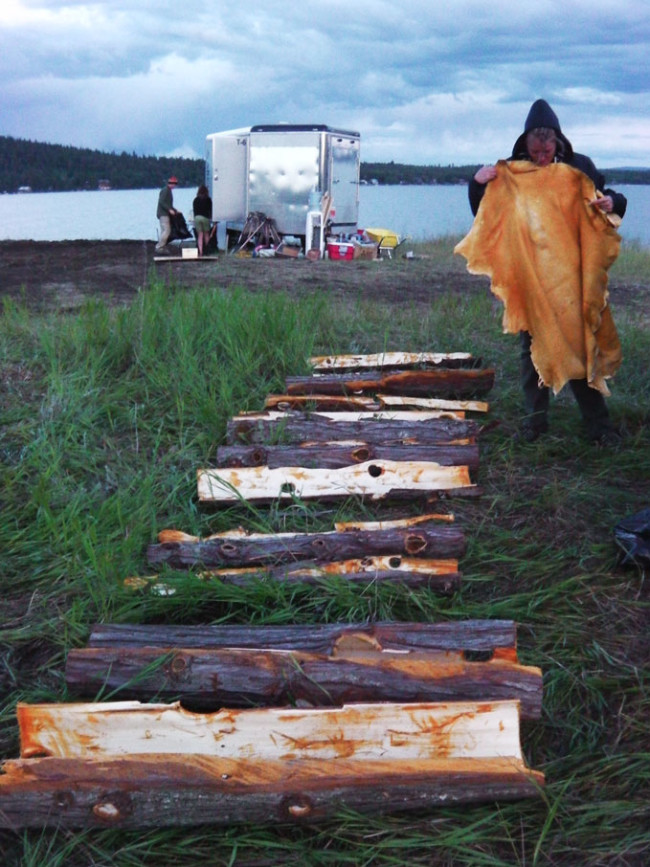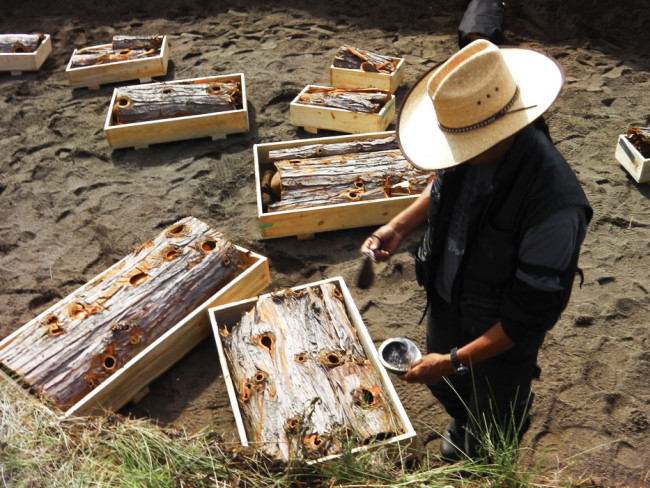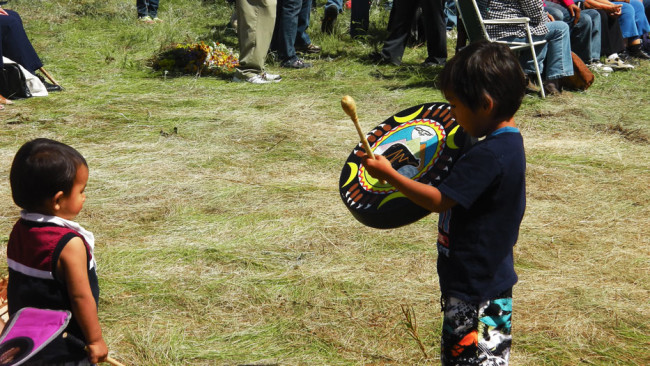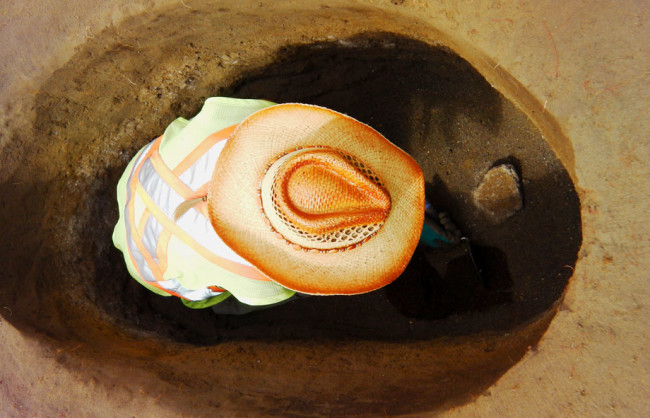Green Lake: An unprecedented collaboration in Shuswap territory
In July, Crossroads Cultural Resource Management participated in what was perhaps our most emotional, profound and unique reburial project to date.
Located atop the steep shores of Green Lake, across from Mount Jim, a First Nations burial site was slowly slumping toward the water. Long bones began emerging 40 years ago, when landowner Robin Rusaw was just nine years old. In 1997, archaeologists relocated one burial farther back on the slope; up to 15 individuals remained in this sliding cemetery.
Since 1997, BC Archaeology Branch has worked toward moving those individuals to solid ground. For two weeks this summer, Crossroads worked in collaboration with eight archaeologists from Archer CRM Partnership and three Canim Lake Band members.
Crossroads acted as liaison between the First Nation, landowner and community. We talked to the neighbours, knowing that any secrecy would cause tension, speculation and problems. We also stayed in close contact with Robin Rusaw, who still lives just a few hundred metres away with her husband, Brian.
We arrived at Green Lake, 1,000 km southeast of Smithers on Shuswap First Nation traditional territory, on July 3, 2013 and began work the following day. During the excavation, many artifacts and several individuals were unearthed and reburied in a more stable location, not far from the original burial ground.
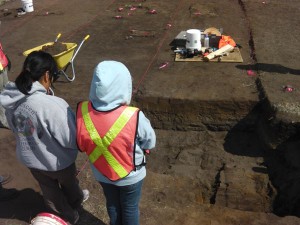 To really understand the connection First Nations have to their ancestors, you had to experience the reburial ceremony: it was like they all just lost their mother, father, brother, sister. The effort that went into sourcing materials was incredible. Moose hides were purchased from Kamloops, two hours away. Elders were smudging while we were preparing by cleansing the workers. Wearing black armbands marked us as pallbearers in this new sacred ground, keeping us spiritually safe.
To really understand the connection First Nations have to their ancestors, you had to experience the reburial ceremony: it was like they all just lost their mother, father, brother, sister. The effort that went into sourcing materials was incredible. Moose hides were purchased from Kamloops, two hours away. Elders were smudging while we were preparing by cleansing the workers. Wearing black armbands marked us as pallbearers in this new sacred ground, keeping us spiritually safe.
With each burial, we put a cedar bow, piece of moose hide and cedar bark on top, with a blanket across. Individuals were buried the way they were found: facing Mount Jim, the highest landmark. Dirt from their original burial sites was poured around them. According to tradition, wildflowers were collected by women and placed at the site.
Community members stepped forward spontaneously, banging the drum and speaking. An elder named Charles asked me to put his drum in the grave. Imagine how he was feeling about his ancestors, to give up his personal drum.
The Rusaws were there, and Robin presented the band with a collection of projectile points that her mother found at the site decades earlier. In return, the band gave Robin a framed photograph of the artifacts, with the word kukwtsétsemc, thank you, at the bottom.
This project is historic in British Columbia. Unlike most archaeology, which is development-driven, BC Archaeology Branch acted as the client. The band has since purchased the site. They plan to make it into a memorial.
A few weeks later, I took my family there for our vacation. The people of Green Lake feel like family now. It’s not really about the project anymore—it’s just about keeping in touch with friends and family.




